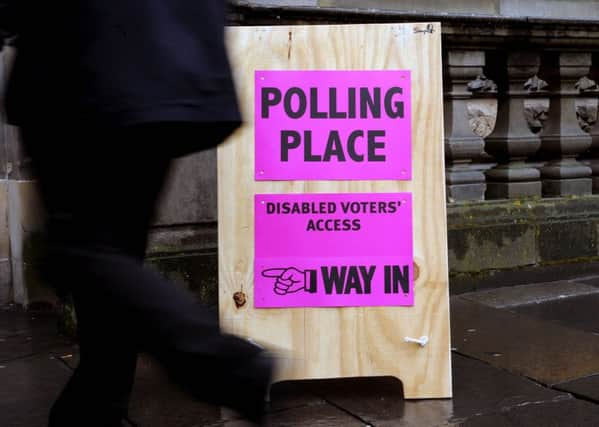Andrew Henderson: Much of interest in manifesto small print
This article contains affiliate links. We may earn a small commission on items purchased through this article, but that does not affect our editorial judgement.


A focus on personalities has dominated the campaign. Leaders of all political hues are eager to impress upon the electorate their own virtues (generally strength) whilst undermining and questioning those of rivals.
• READ MORE: General election news
That the noise of personality politics risks drowning out reasoned debate is nothing new. In this campaign, perhaps more so than in other recent elections, we should not lose sight that voters have been presented with menus of clear, distinct – and often contentious – policies to choose between.
Advertisement
Hide AdAdvertisement
Hide AdThe Conservative manifesto bids to wrest voters away from Labour in its own heartlands, whilst continuing to water its own party’s blue grass roots.
Theresa May is working hard to project a vision of a government at ease with adopting policies of the left, whilst continuing to pursue the natural staples of the right. Market intervention in the form of energy price caps and legislating on board room pay sits alongside measures to drive a low-tax economy and pledges to target inefficient regulation.
• READ MORE: May tries to revive Tory campaign with Brexit push
Meanwhile under Jeremy Corbyn, Labour – a very different beast to that which contested the 2015 election – is unapologetically pursuing a traditional leftist agenda, including extensive nationalisation of transport and utilities, and tax rises for high earners.
Yet, beneath the headline policies – which often tend to grab attention more due to subsequent slip-ups or supposed inconsistency than the inherent value of the political idea itself – there is much in the manifestos to pique business interest and, for some organisations, to cause concern.
While business leaders may not themselves read all manifestos cover-to-cover, it is imperative that organisations have a clear understanding of what parties are proposing. For instance, in the financial services sector, be it Labour’s pledge to legislate against bank closures, or the Conservatives’ proposed heightening of transparency around executive pay, policies abound which, if ultimately introduced, could have a direct and significant impact.
In the renewables sector, the SNP’s pledge to press the Westminster government to include onshore wind in its industrial strategy stands potentially at odds with the Conservatives, who believe that more large-scale onshore wind power is not desirable south of the border. Those in higher education will be watching closely the competing party visions for those coming to study from abroad.
Advertisement
Hide AdAdvertisement
Hide AdSide-by-side analysis of the manifestos can also pinpoint occasional areas of consensus: all four major parties offer commitments to greatly extend high speed mobile coverage, especially to rural areas, where smaller businesses are at a disadvantage.
Polls have suggested that the Conservatives will win a majority across the UK, though perhaps not of the hugely increased magnitude Theresa May envisaged when she called the snap election.
In Scotland, Nicola Sturgeon’s SNP is expected to be comfortably returned as the largest party. However, it is unlikely to repeat the 2015 success when it won an unprecedented 56 of the country’s 59 constituencies.
• READ MORE: Angus Robertson set to lose Moray seat
Having begun the campaign facing a 20-point polling lead for the Conservatives, Jeremy Corbyn has, seemingly against the odds, more than halved this gap. Some recent polls suggest that the Conservatives may now be ahead by as little as just three per cent – close to hung parliament territory.
With polls narrowing, a closer look at party manifestos in the final days of the campaign may not offer business a crystal ball, but it will certainly aid planning for the coming parliamentary term.
• Andrew Henderson is director of public policy at legal firm Pinsent Masons